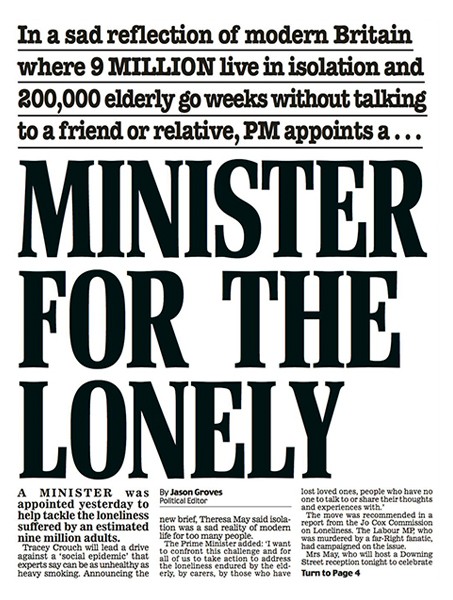WHAT IS LONELINESS?
3.6
Different perspectives on loneliness 3
Health Sciences / Psychology
The paradox of widespread loneliness in an increasingly connected world aligns with perspectives in psychology and health science, which often frame loneliness as a medical condition – a deviation from mental well-being with identifiable causes, symptoms and treatments. In this view, loneliness is not seen as an inherent condition of human existence or a product of modernization, but as a condition of pathology.
This medicalized understanding has gained significant influence in recent years. In 2023, the WHO declared loneliness a ‘global public health concern’, with health officials speaking of a ‘loneliness epidemic’ and governments appointing ‘ministers of loneliness’. The surge in attention has significantly expanded research on loneliness, particularly its health effects, with studies linking it to conditions like high blood pressure, dementia, stroke and depression. Pharmaceutical companies are even working to develop a ‘pill for loneliness’, reflecting an understanding of loneliness as medical syndrome.

News coverage in the Daily Mail of January 17, 2018 about UK Minister of Loneliness
Much of this research relies on a relatively straightforward understanding of loneliness as a discrepancy between a person’s desired and achieved levels of social relations, a definition introduced by social psychologists in the early 1980s (Perlman and Peplau 1981)1. According to this approach, loneliness arises when the quantity or quality of relationships fails to match our relational life, leading to the emotional response we recognize as loneliness.
The recent EU Commission study ‘Monitoring Loneliness in Europe’2 further distinguishes between emotional loneliness – characterized by the lack of a meaningful relationship with a significant other or close friend – and social loneliness, which reflects an insufficient broader social network of friends, neighbors or colleagues.
While these definitions provide useful measures, they tend to reduce loneliness to an individual psychological state, focusing narrowly on how a person may feel about their relationships at a given time and on personal deficits in social connections. This narrow view risks overlooking the deeper foundations of our emotional lives and the broader social, cultural and historical contexts that shape how we assign meaning to our relationships and separations. In doing so, it neglects the complex texture of loneliness – a texture woven from the interplay of biology, subjective experience and cultural environment.
This is where anthropology offers a distinct approach, one that may better grasp the dynamic, relational nature of loneliness. Rather than treating loneliness merely as a problem to be solved – through individual therapy or even medication – we can view it as a lens for exploring human connection in a changing world. To better grasp this complexity, in the next step we turn attention to the nature of emotion itself, looking at different perspectives in anthropology.
Check out these links:
News coverage about: UK & Japan Minister of Loneliness
Guardian story about ‘pill for loneliness’
Pause for Thought
Should loneliness be treated like a medical condition?
What might be gained – or lost – when we start seeing emotions as symptoms?
Take some notes in your learning diary.
Author: Michael Stasik
-
Perlman, Daniel and Letitia Anne Peplau. 1981. Toward a Social Psychology of Loneliness. In: R. Gilmour, & S. Duck (Eds.), Personal Relationships: 3. Relationships in Disorder (pp. 31-56). London: Academic Press. ↩
-
https://joint-research-centre.ec.europa.eu/projects-and-activities/survey-methods-and-analysis-centre/loneliness_en ↩
